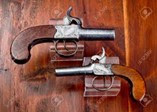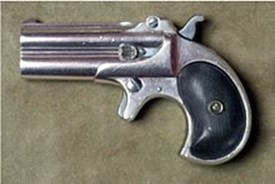Last month, I
shared a blog post about two early Wyoming Territory women which I learned
about as part of my research for my recent book, Lauren,
I came across an account of two women who made an impact on early Wyoming history.
I saved their story for Women’s History Month, focusing on the mother, Alice
Willing Bloomer. This month, I wish to finish with more details about the
daughter, Mary Jane Bloomer Morey Stimpson Richardson. You may find the
previous post by CLICKING HERE.
Mary Jane Bloomer’s three husbands were
the following, the second two marriages taking place after her move onto the
Wyoming Territory frontier:
Marriage to Charles Norman Morey 1857
Marriage to William G Stimpson 1869
Marriage to William Richardson 1880
At the end of the
Civil War, Mary Jane Bloomer Morey, finding herself destitute after her husband
suffered a disabling brain injury as a result of his war service, put him in a home for the insane and looked
for a means to support herself and her family. Her mother, Alice Willing Bloomer,
who was widowed because of the war, and Mary Jane’s three-year-old son, Frank
Morey, traveled to Leavenworth, Kansas, where, for a time, they worked at the
Dexter Hotel.
Mary Jane's mother,
Alice, was suffering from consumption. At wars end, it was widely proclaimed
that consumption could be cured by moving west to the high and dry climate.
They walked with a hand cart to Grand Island Nebraska in the middle of February
1868. The ladies then rode a train to
the new town of Cheyenne near the end of the tracks. They next rode the train to the Dale Creek
Bridge construction site, then they walked about twenty miles to Fort Sanders,
arriving on March 4th. There, they stayed for a short time while the
town of Laramie was platted out and started building. As soon as the first hotel, the
"Frontier", was completed, the ladies took over management of the
eating establishment there.
In August 1868,
railroad officials offered Mary Jane a job operating the services at Percy
Station north of Elk Mountain. It was also the time when she married her second
husband, William Stimpson, a merchant from England. They boarded the train to
Cheyenne for the wedding. Percy Station was a loading point for ties from the
Elk Mountain area. Mary Jane had Chinese employees in her kitchen, and she soon
learned to speak Chinese and several Indian dialects.

By 1873, business at
the Percy Station had greatly decreased, so it closed. Mary Jane and William
Stimpson purchased the old Overland Trail Stage Station at "The
Crossings" on the Medicine Bow River, which thirty later became known the
town of Elk Mountain. This location served as a way-point for
early American settlers heading west along the Overland Trail and other
routes. There, Mary Jane operated
a boarding house, toll bridge, supply store, and tavern. Local histories are
full of stories about Indian fights, bandits trying to rob the store, and Mary
Jane sitting on the bridge with a shotgun in order to "collect" the
toll bridge charge from immigrants moving up the Overland Trail.
 |
Relationship of Elk Mountain and Medicine Bow, both along Medicine Bow River - courtesy of Google Maps
|
In 1874, a daughter
the Stimpsons named Mary Alice was born. In 1876, four years after Mary Jane's mother’s
death, William Stimpson also died. He had been growing progressively weaker, and it
was suspected he had cancer. This forced the family to move to Carbon, where
Mary Jane worked at a boarding house. The only record of his death is the listing
in Mary Jane’s family Bible.
Not long after
William Stimpson’s death, the Trabing Brothers, who already owned a store in
Rock Creek along the Union Pacific Railroad line, which was located about
twelve miles north of present day Rock River, decided to expand their mercantile
empire by purchasing the store at
"The Crossings" from the widow, Mary Jane. More details about the
Trabing Brothers businesses may be found in a post I wrote for another blog.
Please CLICK HERE.
The summer after
Custer's battle at Little Big Horn, the Bozeman trail re-opened. The Trabing
Brothers decided to be the first to open a store in northern Wyoming and chose
a site at Crazy Woman Creek. August Trabing hired
Mary Jane to be the store manager.
 |
Not Mary Jane, but, yes, women did drive ox teams
|
Mary Jane drove two wagon loads of
supplies with her fifteen-year-old son, Frank Morey-Stimpson, and five-year-old
daughter, Mary Alice Stimpson, . Again, with no protection and traveling alone,
Mary Jane headed to Fort Fetterman and on up the Bozeman Trail to the Trabing
Trading Post Store on Crazy Woman Creek, arriving in good order while the store
was still under construction in the fall of 1877.
While at Crazy Woman
Creek, Mary Jane's daughter died of scarlet fever in
1878. She was probably buried somewhere near the old store site.
While working at the
Trabing store at Crazy Woman Creek, Mary Jane was also robbed by a gang, which
was later identified as the Big Nose George gang. This could have been around
the same time as the attempted railroad derailment outside of Medicine Bow in
August, 1878, which was thwarted by an observant section crew foreman.
Mary Jane also acted
as the area doctor, housed Moreton Frewen, the Englishman who brought the first
cattle to northern Wyoming, and dealt with freighters and stage coach drivers,
including Calamity Jane and Wild Bill Hickock.
Mary Jane operated
the store at Crazy Woman Creek for just over a year, before the Trabing Brothers moved the
location to what would soon be the town of Buffalo. In the 1880 census there are only five
families in northern Wyoming who were not connected with the military. Among
those five families was Mary Jane and her son, Frank Morey.
William Richardson, a
coal miner in Carbon and a good friend of William Stimpson, received the news
of Mary Jane’s daughter’s death. Richardson,was an immigrant coal miner
from West Auckland, Durham, England. He
rode north to Buffalo and brought Mary Jane back to Carbon. There they were
married. Mary Jane then had three more children while she was between
the ages of forty and forty-four: Thomas Darrow Richardson, Edward Richardson,
and Willing Gay Richardson.
Eventually, the
family moved back to Elk Mountain. Several incidences of Mary Jane’s life
include fighting off three renegade Indians and killing one in hand-to-hand
combat at the ranch, "engineering" the irrigation for the Medicine
Bow River Valley, building a post office, and challenging a neighbor to a
gunfight when he threatened the family.
A newspaper article
states that "the first irrigation
ditch was built out of the Medicine Bow River by (Mary Jane) Mrs. Richardson
and is still known as the "Garden Ditch". She also owned a toll
bridge, store, hotel and saloon at Medicine Bow Crossing Station, today known
as the town of Elk Mountain."
We do not believe this date could be correct as she did not move to
"the crossing" until after 1870. A more reliable date for the garden
ditch at Elk Mountain would be 1878. A quote
from the same article, "From a
reliable source it was learned that it was a fact that Buffalo Bill, for some
reason or other was ejected from the hotel by Mrs Richardson."

Mary Jane Bloomer
Morey Stimpson Richardson died at the age of sixty-nine on December 21, 1910 in
Elk Mountain, Carbon County, Wyoming. Elk Mountain played a crucial role in
supporting the coal mining and timber industries vital to the Union Pacific
Railroad's success. Many families settled here, immigrating from Finland,
Sweden, and other European countries, bringing with them a rich diversity of
cultures and traditions. She was buried in Elk Mountain
cemetery.
Lauren, Book 2 in the Rescue Me (Mail-order
Brides) series, takes place several years after, some of these incidences.
However, Mary Jane was still alive and active in that general region of Wyoming
Territory during the timeframe of this book. The incident with Big Nose George
robbery would have taken place at the same time as Lauren’s story. To read the
book description and find the purchase options, please CLICK HERE.
Mary Jane Bloomer
Morey Stimpson Richardson was still in the region at the same time as my story,
Ellie,
from the Runaway Brides of the West series. To find the book description and
purchase options, please CLICK HERE.
Sources:
http://genealogytrails.com/wyo/carbon/bio3.html
https://www.familysearch.org/service/records/storage/das-mem/patron/v2/TH-904-69401-62-33/dist.txt?ctx=ArtCtxPublic
https://www.findagrave.com/memorial/142211768/mary-jane-richardson
https://www.wyomingcarboncounty.com/places-to-visit/elk-mountain








































